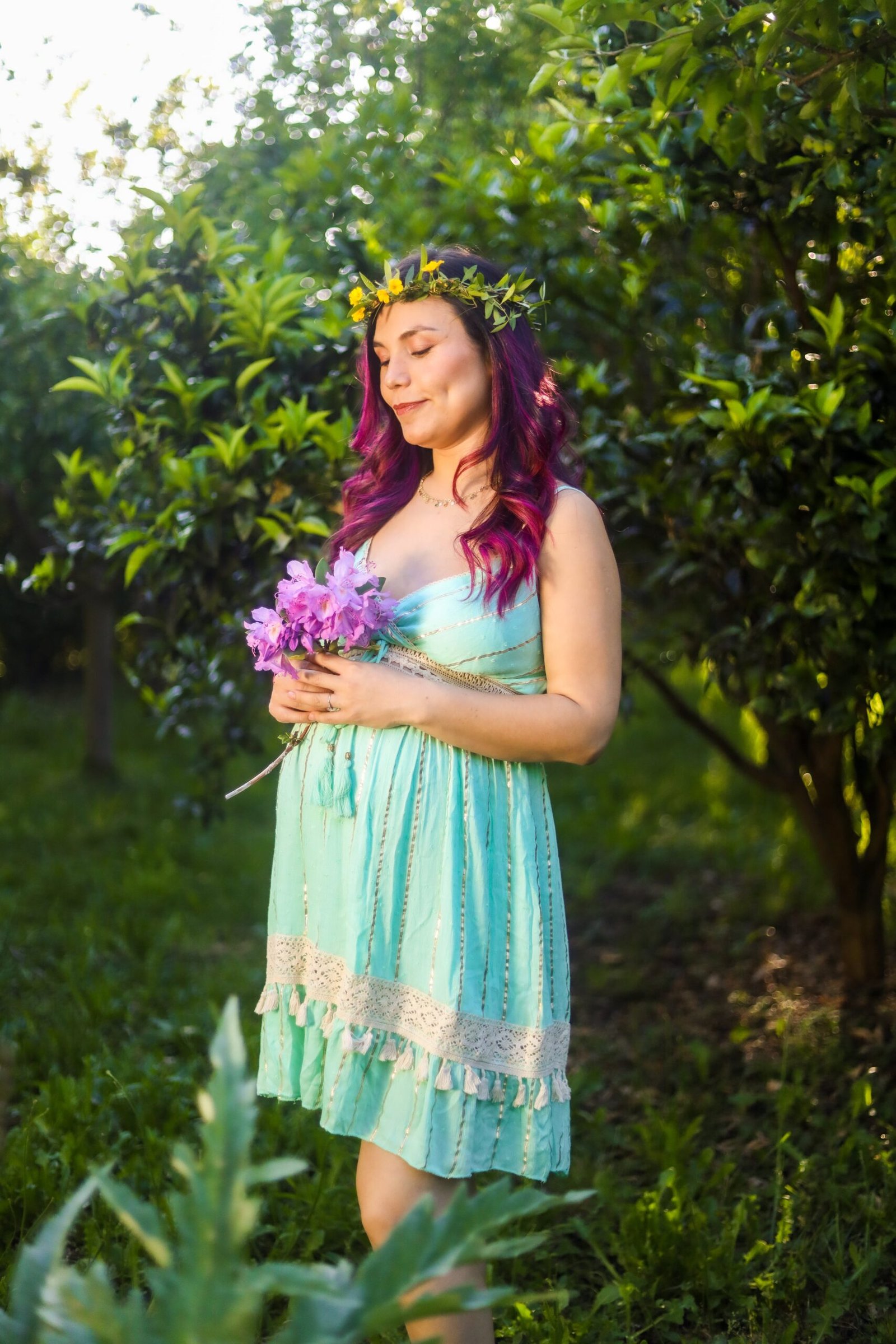
Potatoes are a versatile and delicious staple in many cuisines, and with the right technique, you can easily grow them in containers right at home. Whether you have limited space or simply want the convenience of having fresh, homegrown potatoes at your fingertips, this article will provide you with invaluable tips on how to successfully grow potatoes in containers using straw. From selecting the right varieties to providing the ideal growing conditions, you’ll soon be enjoying a bountiful harvest of your very own homegrown potatoes. So let’s dig into the world of container gardening and discover the secrets to growing these delectable tubers with the help of straw.

Choosing the Right Containers
Size of the Container
When choosing containers for growing potatoes, it is important to consider the size. Potatoes need enough space to grow and develop their tubers without being cramped. A container that is at least 20 inches deep and wide is recommended to provide ample room for the potato plants to thrive. This will allow for proper root development and ensure that the potatoes have enough space to grow without being crowded.
Material of the Container
The material of the container plays a significant role in the success of growing potatoes. It is best to choose containers made of a durable and lightweight material such as plastic or fabric. Plastic containers are easy to find and have the advantage of retaining moisture better than other materials. Fabric containers, on the other hand, provide excellent drainage and aeration for the roots. Avoid containers made of metal or clay, as they can heat up quickly in the sun and potentially harm the roots of the plants.
Drainage Holes
Proper drainage is crucial for growing potatoes in containers. Ensure that the containers you choose have drainage holes at the bottom to prevent waterlogging and promote healthy root growth. These holes allow excess water to escape, preventing root rot and other water-related issues. If the containers you prefer do not have drainage holes, you can drill some with a drill or use a layer of rocks or gravel at the bottom of the container to create drainage.
Preparing the Containers
Clean and Sterilize Containers
Before planting potatoes, it is essential to clean and sterilize the containers. This helps to prevent the accumulation of bacteria, fungi, and pests that can harm the potatoes. Wash the containers with hot soapy water and rinse thoroughly. You can also sanitize the containers by spraying them with a solution of one part bleach to nine parts water. This will ensure that your containers are free of any harmful pathogens or contaminants.
Create Drainage system
While containers usually have drainage holes, it is important to improve drainage further by creating a drainage system. This can be achieved by elevating the containers slightly above the ground using bricks or pot feet. This allows excess water to flow freely, preventing waterlogging and decreasing the risk of root rot. Additionally, consider using a layer of rocks or gravel at the bottom of the container to promote drainage.
Selecting the Soil
Choosing the right soil is crucial for successful potato cultivation in containers. Look for high-quality potting soil that is well-draining and nutrient-rich. Avoid using garden soil, as it can be heavy and not suitable for container gardening. You can also add organic matter such as compost or aged manure to improve the soil’s fertility and drainage. A loose and well-draining soil will encourage good root development and prevent the risk of waterlogged conditions.

Selecting the Right Variety
Determining Space Requirements
Different potato varieties have varying space requirements, so it is important to consider this when selecting the right variety for your containers. Some varieties are more compact and suited for smaller containers, while others require more space due to their extensive root systems. Before choosing a potato variety, check the recommended spacing guidelines provided by the seed supplier or nursery. This will help you determine how many plants can be accommodated in each container without overcrowding.
Differentiating between Early, Mid, and Late Season Varieties
When selecting potato varieties, it is essential to understand the differences between early, mid, and late-season varieties. Early-season varieties mature quicker than mid and late-season varieties, typically within 60-80 days. Mid-season varieties take around 80-100 days to mature, while late-season varieties may require 100-135 days or more. Consider your climate and growing season length when choosing the right potato variety for your containers. Selecting a mix of early, mid, and late-season varieties can ensure a continuous harvest throughout the growing season.
Considering Disease Resistance
Potatoes are vulnerable to various diseases, including blight, scab, and viruses. When selecting potato varieties, consider opting for disease-resistant varieties to minimize the risk of crop loss. Look for varieties with resistance to common potato diseases prevalent in your region. Disease-resistant varieties can save you from the hassle of dealing with potential outbreaks and help ensure a successful potato harvest.
Planting Process
Chitting Seed Potatoes
Chitting, or pre-sprouting, seed potatoes before planting can give them a head start and promote faster growth. To chit seed potatoes, place them in a cool, well-lit area with temperatures around 50-60°F (10-15°C). Arrange the potatoes with the eyes facing upward in a single layer on a tray or egg carton. This allows the sprouts to develop before planting, increasing the chances of successful growth.
Preparing Seed Potatoes
Before planting, it is important to prepare the seed potatoes by cutting them into pieces. Each piece should have at least one or two healthy sprouts and be about the size of an egg. Leave the cut pieces to dry for a day or two to prevent rotting. When cutting the seed potatoes, ensure that the knife is clean and sharp to minimize the risk of introducing any pathogens to the potatoes.
Filling Containers with Soil
Fill the containers with enough soil to accommodate the seed potatoes. Start by adding a layer of soil at the bottom of the container, then evenly space the seed potato pieces on top. Cover the seed potatoes with a layer of soil, leaving about an inch or two of space from the rim of the container. As the potato plants grow, continue adding soil until the container is nearly full, leaving a few inches of space for watering.

Care and Maintenance
Watering Potatoes in Containers
Consistent watering is crucial for growing potatoes in containers. Potatoes require well-drained soil, but they also need consistent moisture to develop properly. Water the containers whenever the top inch of soil feels dry to the touch. Ensure that the water reaches the bottom of the container to encourage deep root growth. Avoid overwatering, as it can lead to waterlogged conditions and root rot. Regularly checking the moisture level and adjusting your watering schedule accordingly will help ensure healthy and thriving potato plants.
Fertilizing Container Grown Potatoes
Potatoes are heavy feeders and require regular fertilization to promote growth and tuber development. Start by incorporating organic matter, such as compost or well-rotted manure, into the soil before planting. This provides a good foundation of nutrients. Throughout the growing season, apply a balanced slow-release fertilizer or organic potato fertilizer according to the manufacturer’s instructions. Avoid overfertilization, as it can cause excessive foliage growth at the expense of tuber development.
Managing Pests and Diseases
Pests and diseases can pose a threat to container-grown potatoes. Watch out for common pests like aphids, Colorado potato beetles, and slugs. Check the plants regularly for any signs of damage or infestation and take appropriate measures to control them. Neem oil, insecticidal soap, or organic pest control methods can help manage pest issues. Additionally, practicing good crop rotation, removing diseased plants, and providing adequate airflow around the plants can help prevent the spread of diseases such as blight and scab.
Monitoring Growth
Observing Sprouting and Growth
After planting, keep a close eye on the containers to monitor the sprouting and growth of the potato plants. Within a couple of weeks, you should start to see the sprouts emerging from the soil. As the plants continue to grow, they will develop foliage and eventually flower. This is an exciting stage, as it indicates that the plants are thriving and on track for a successful harvest. Regular observation allows you to catch any signs of poor growth or disease early on and take appropriate action.
Moving Containers for Optimal Sunlight Exposure
Potatoes require ample sunlight to thrive and produce a good crop. Throughout the growing season, monitor the sunlight exposure in your gardening area. If the containers are not receiving at least six to eight hours of direct sunlight each day, consider moving them to a sunnier spot. Portable containers offer the advantage of flexibility, allowing you to adjust their position as needed. Ensuring that the plants have access to sufficient sunlight will help promote healthy growth and maximize the yield.
Monitoring Soil Moisture
Regularly monitor the moisture level of the soil in the containers. Stick your finger about an inch into the soil and check if it feels moist or dry. Adjust your watering schedule accordingly to maintain consistent moisture. Potatoes require slightly moist soil, but overwatering should be avoided. Monitoring the soil moisture helps prevent waterlogged conditions or drought stress, both of which can adversely affect the growth and development of the potato plants.
Staking and Supporting
Determining Need for Staking
As the potato plants grow, some varieties may require staking or support to prevent them from sprawling and potentially damaging the stems or tubers. Determining the need for staking can be done by observing the growth habit of the variety you are growing. If the plants are starting to lean or if the foliage becomes too dense, it is a good indication that staking might be necessary. Staking helps provide support to the plants, keeping them upright and preventing unnecessary strain on the stems.
Types of Stakes and Supports
There are various types of stakes and supports that can be used to support growing potato plants in containers. Bamboo stakes, tomato cages, or trellises can be effective options. For smaller containers, it is best to use stakes that can be inserted into the soil close to the plant and provide support throughout the growing season. Choose stakes or supports that are durable and can withstand the weight of the plants as they grow and develop.
Proper Staking Techniques
When staking or supporting potato plants, it is important to do so properly to avoid damaging the plants. Insert the stakes or supports securely into the soil near the plant, ensuring that they are firmly anchored. Gently tie the stems of the plants to the stakes or supports using soft plant ties or twine. Be careful not to tie too tightly or constrict the stems, allowing room for growth. As the plants continue to grow, regularly check the stakes or supports to ensure they are still providing adequate support.
Dealing with Common Issues
Preventing Overcrowding
In container gardening, overcrowding can hinder the growth and development of potato plants. It is important to avoid planting too many potato pieces in a single container, as this can lead to competition for resources and limited space for root and tuber development. Follow the recommended spacing guidelines for the potato variety you are growing, ensuring that each plant has enough room to grow and access to sunlight, water, and nutrients.
Addressing Yellowing Leaves
Yellowing leaves in potato plants can be a sign of various issues, including nutrient deficiencies, overwatering, or pests. If you notice yellowing leaves, examine the plants closely to identify the cause. Adjust your watering schedule if necessary, ensuring that the soil is not waterlogged. Consider fertilizing with a balanced fertilizer specifically formulated for potatoes to address nutrient deficiencies. If pests are present, take appropriate measures to control them and minimize damage to the plants.
Managing Tuber Development
Proper tuber development is crucial for a successful potato harvest. To encourage tuber growth, it is important to provide consistent moisture, adequate nutrients, and a well-draining soil. Avoid overfertilizing, as it can result in excessive foliage growth at the expense of tuber development. As the plants mature and approach harvest time, monitor the condition of the potato tubers. If the skin has hardened and the foliage begins to yellow and die back, it is an indication that the tubers are reaching maturity and are ready for harvest.
Harvesting
Determining Harvest Time
The timing of potato harvest depends on the variety and desired use of the potatoes. Early-season potatoes can be harvested when the plants start flowering, while mid and late-season varieties should be harvested when the foliage has completely died back. To assess the readiness of the tubers, gently dig around a plant and examine the size and skin texture of the potatoes. Mature potatoes will have a firm skin and reach their full size. However, for new potatoes, which are harvested earlier, the skins will be more tender and the tubers smaller.
Harvesting Techniques
To harvest potatoes from containers, carefully dig around the base of the plants using a garden fork or shovel. Lift the plant and gently remove the soil around the tubers. Avoid damaging the potatoes during harvest to prevent rot and prolong their storage life. Shake off excess soil and allow the harvested potatoes to dry for a couple of hours. This will ensure that they are clean and free from excess moisture before storage or consumption.
Curing and Storing Potatoes
After harvesting, it is important to cure potatoes before storing them. Curing involves allowing the potatoes to dry in a cool and well-ventilated area for a week or two. This helps toughen the skin and improve their storage life. After curing, brush off any remaining soil and transfer the potatoes to a cool and dark space for storage. Ideal storage conditions for potatoes include temperatures around 40-45°F (4-7°C) and humidity levels of 85-90%. Check stored potatoes regularly and remove any that show signs of rot or decay to prevent spoilage.
Potential Challenges and Solutions
Common Problems in Container Potato Growing
Growing potatoes in containers comes with its own set of challenges. Common problems include overwatering, under or over-fertilization, pests, and diseases. Overcoming these challenges requires careful attention and proper management. Understanding the specific needs of potato plants and implementing the appropriate cultural practices, such as proper watering, adequate fertilization, and vigilant pest and disease management, can greatly minimize the risk of encountering problems and ensure a successful container potato harvest.
Troubleshooting and Solutions
When faced with challenges in container potato growing, it is important to troubleshoot and take appropriate action. For issues such as overwatering, adjust your watering schedule and allow the soil to dry out between waterings. If you notice signs of nutrient deficiencies, fertilize the plants according to their specific needs. Address pest and disease problems promptly by using organic or chemical control methods, depending on your preferred approach. Regularly monitor the plants and be proactive in identifying and addressing any issues that arise to ensure healthy, thriving potato plants in your containers.





